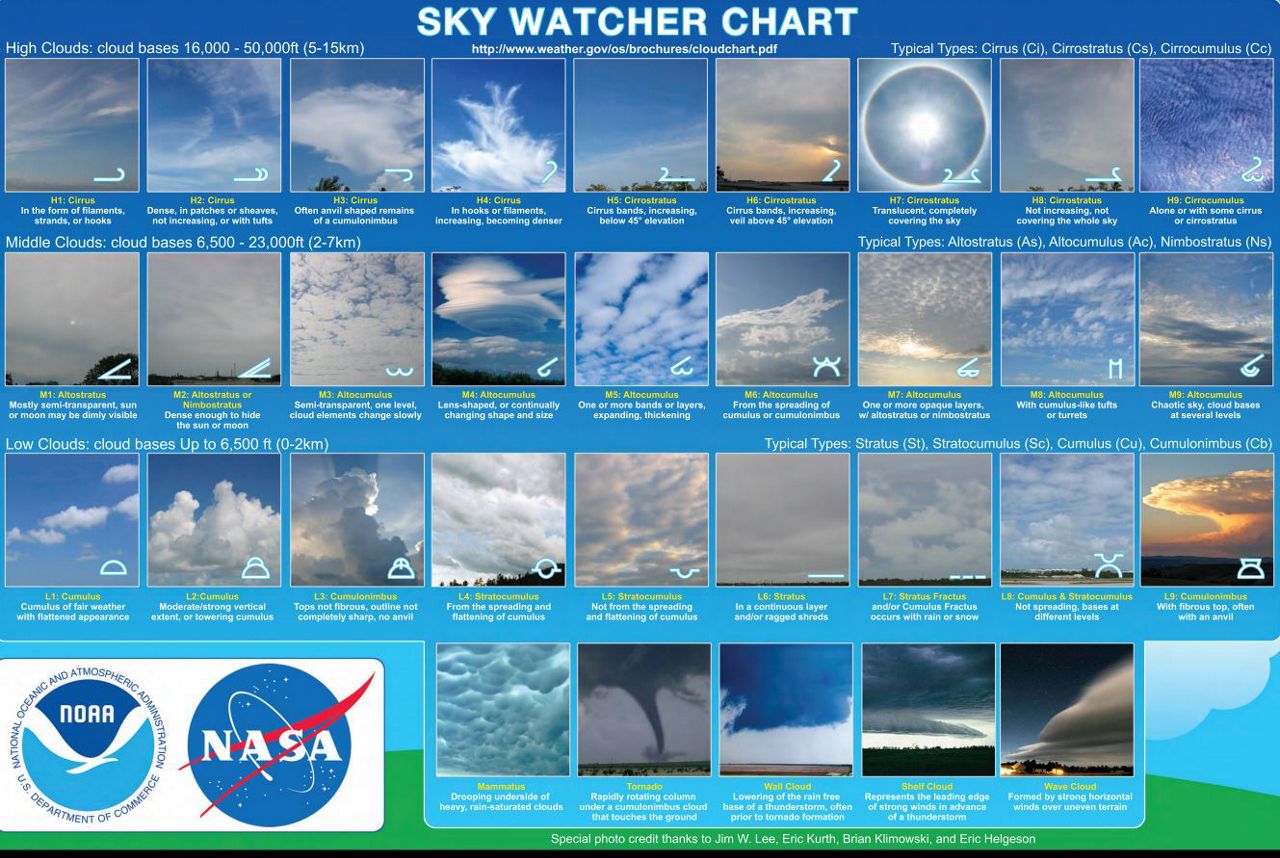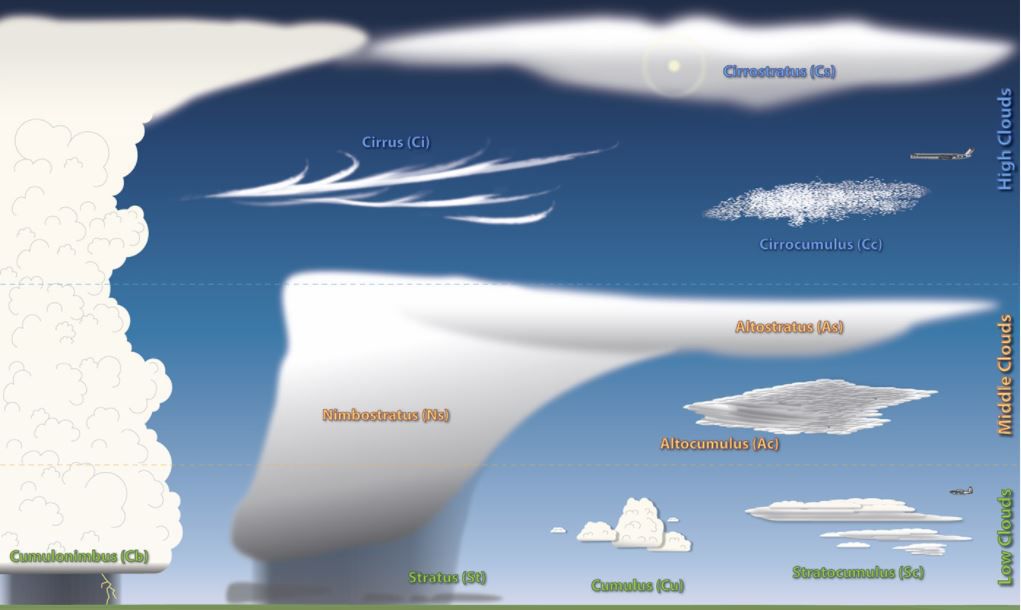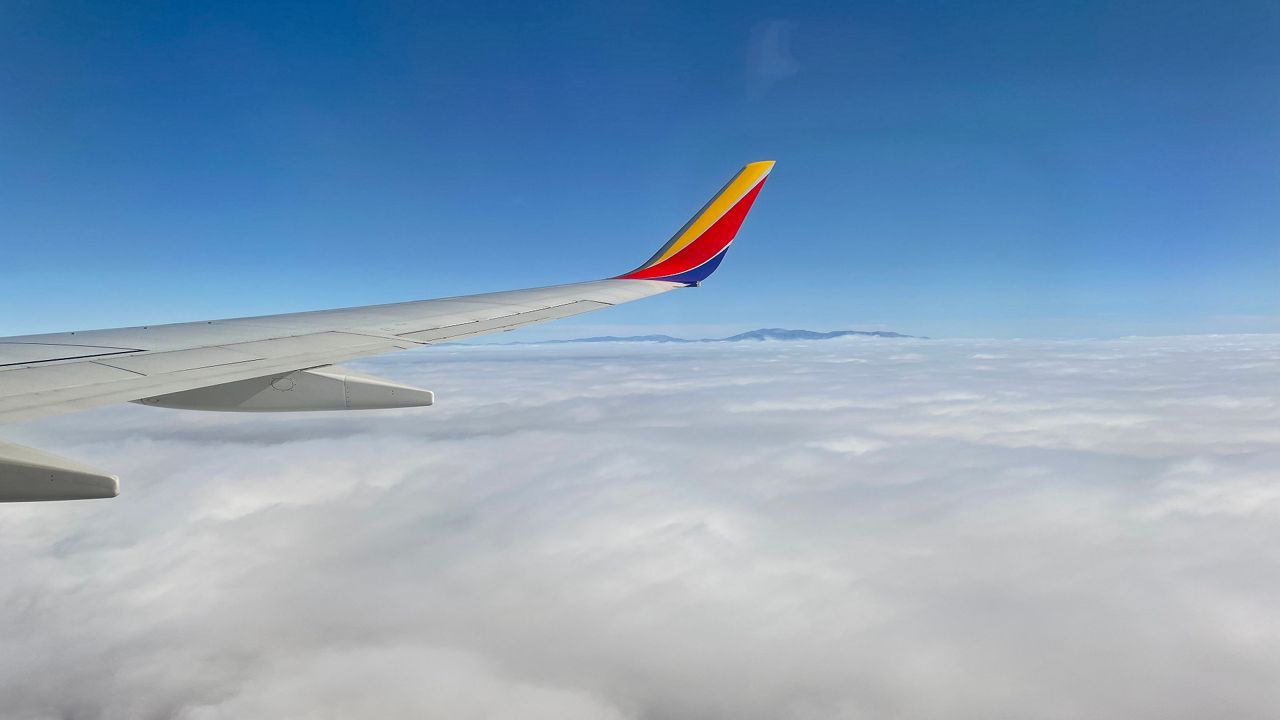Have you ever look up into the sky and thought to yourself, "that's a cool-looking cloud, I wonder why it looks like that?" Or "how high is that cloud?" Well, a lot of what a cloud looks like has to do with how high in the sky it is.
The troposphere is the layer of the atmosphere where weather happens. This layer goes from the Earth's surface all the way up to 50,000 feet.
First, let's talk about how a cloud forms. Clouds form when air becomes saturated - relative humidity reaches 100% - and can no longer hold more water vapor.
The water vapor condenses and forms tiny cloud droplets. These cloud droplets can be made of water or ice crystals. Eventually, enough cloud droplets combine to form a cloud.
Clouds form at altitudes anywhere from right at the Earth's surface to the top of the troposphere. Some clouds have very little impact on the weather at the Earth's surface. Other clouds are responsible for creating severe weather, such as tornadoes.

You can download a PDF of this cloud chart here.
Some clouds can only be several feet tall and others can grow to the top of the troposphere. The tallest clouds have the biggest impact on the weather here on the ground.
It may seem like there are endless types of clouds that take on different shapes and sizes and thicknesses. However, there are only four core groups of clouds. These four core groups combine to form 10 basic cloud types.
The highest cloud is a cirro-form cloud. These are made of ice crystals and are the wispy types found at very high levels of the troposphere.
Next, we have cumulo-form clouds. These are clouds with vertical development. On the small end, they look like puffy cotton balls in the sky. They form when warm air rises and condenses and can grow very tall.
Then we have strato-form clouds. These clouds form in sheets or layers, kind of like a blanket.
Lastly, we have nimbo-form clouds. Nimbus is the Latin word for rain.
From these four basic cloud forms, there are many combinations that make up roughly 10 categories of clouds.
These 10 categories of clouds are altocumulus, altostratus, cirrus, cirrocumulus, cirrostratus, cumulonimbus, cumulus, nimbostratus, stratocumulus and stratus. These 10 categories can also be further divided based upon their altitude.
Clouds are broken down into high, middle and low clouds, as seen in the chart below.




